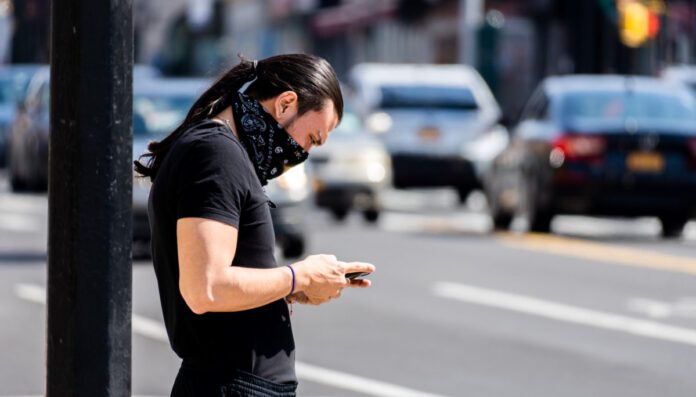Reported COVID-19 cases in the U.S. continue to rebound, growing 35,477 in the past 24 hours to 902,582, an increase of 4 percent. At this rate, the U.S. will surpass 1 million cases in three days. Total deaths reached 46, 254, an increase of 1,793 or 4 percent in the past 24 hours.
Globally, cases climbed 100,000, or 3.6 percent to 2.828 million with 197,924 deaths attributed to the coronavirus.
We are now at a place called “stabilization,” where deaths have leveled off and new case growth is caused by more testing rather than more viral spread. For example, New York tested a record 34,736 people on April 23, resulting in 8,130 new cases, which is an uptick over prior days. Both new and existing hospitalizations decreased, however, demonstrating that the new cases are not as severe as they were at the height of the illness when new hospitalizations were increasing in excess of 3,000 per day.
As more tests are rolled out, we may continue to see increases in cases without a commensurate increase in serious illnesses. The unanswered question is, how many newly identified cases that do not need hospitalization today will need it in three days or a week? How many cases will remain below the critical level and can recover at home with little or no medical intervention?
Obviously, we need a new metric to measure the severity of COVID-19 as positive cases does no longer mean what they once did, especially as many people who tested positive recover. We need to be looking at total cases, recovered, current cases, and current critical cases.
What COVID-19 Means to Cities
American’s cities have seen a roller coaster of population growth over the years. People shifted towards city living when the industrial revolution first provided factory jobs. These jobs peaked in the 1970s and for years afterwards, cities like Detroit, Pittsburgh, Baltimore, and Gary, Indiana, lost jobs, people, and their standard of living. Add the effects of riots and social unrest in the 1960s and 1970s and the rise of crack cocaine in the 1980s, and inner cities went from vibrant to destitute in a few decades.
Recently, many cities have seen a renaissance and a rebirth. Neighborhoods once considered “bad” were gentrified, pushing out the drug dealers and the poor. Stores popped up to serve the new residents who enjoyed what were initially low rents and the ability to walk or take mass transit to jobs, museums, entertainment, and nightlife. Millennials who married and had children later in life than generations prior helped drive this change by living and working downtown instead of moving to the suburbs. So too did empty nesters who returned to cities when they downsized from their larger suburban homes.
Will the coronavirus, which has hit cities much harder than rural areas change this? My guess is not much at first, but if a second wave roars through this fall things could reach a tipping point, especially among the older and the wealthier who can afford to live wherever they want.
Longer term, we need to consider the costs cities paid to fight coronavirus. If the services, restaurants, and retailers that attracted people back to downtowns are all closed or bankrupted, then downtowns become less attractives. If cities have to raise tax rates or cut services due to the economic costs of fighting coronavirus, then that, too, could have a chilling effect.
We may see people start to trickle out of cities, but in a few years it might become more of a torrent.
Coronavirus Proves Preppers Right
For decades, preppers have moved, or at least dreamed of moving, to a few acres in the country where they can have more self-sufficiency and privacy. Places like Vermont and Idaho have attracted those tired of city life, liberal politics, and socialism. Now coronavirus may provided added incentive to move.
Preppers are not the only ones to have noted that it’s almost impossible to get coronavirus in a cabin the middle of a forest, on 40 acres along a river, or on 125 acres of farmland.
While people living far from urban centers do not live there to avoid a pandemic, the coronavirus has proven the value of living in a sparsely populated state or county. States with the lowest number or reported COVID-19 infections are Wyoming (349), Alaska (337), Montana (444), Hawaii (595) North Dakota (748), Vermont (827),Maine (965), and West Virginia (1010), rural states with low population densities.
Compare these to the states with the highest number of cases: New York (271,621), New Jersey (99,989), Massachusetts (50,969) and California (41,369). Cases in these states are growing more daily than the remote states have in total.
New York has large rural areas, mountains, lakes, and plenty of agriculture. So does Massachusetts and California. But they also have thruways and interstates that provide a pathway for viruses. That’s why a rural New York county near the Canadian border has more cases than any county in Montana or West Virginia.
Population Density is the Problem
Here’s another way to look at it: New Jersey has a population of 8.9 million. Montana has a population of 1.1 million. So while New Jersey has eight times the population of Montana, they also have 225 times the COVID-19 cases and 383 times as many deaths. States with lower population density have fewer cases per capita than states with higher population density.
As we have said before, when it comes to the coronavirus, or any other virus spread by human proximity, population density kills.
Of course, access to medical care is better in cities, as are ambulance response times and police and fire response. Many rural communities are underserved, have fewer resources, and may not have access to good emergency room care. There’s an obvious tradeoff when you leave the city and move to the country, but we think it’s one more people are going to consider over the next few years.
To put today’s COVID-19 numbers into perspective, take a look back at yesterday’s news and numbers or check back a week when there were less than 700,000 cases in the U.S.








